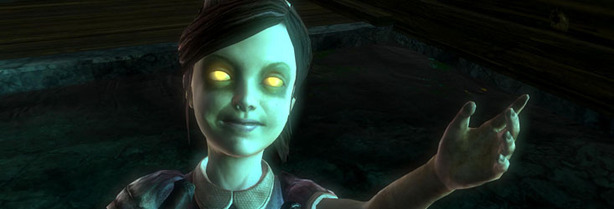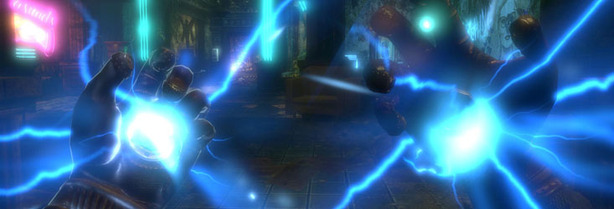
BioShock 2 Review
Publisher: 2K GamesPlatform: PC, Xbox 360, PS3
UK Price (as reviewed): £24.99 (incl. VAT)
US Price (as reviewed): $44.99 (excl. Tax)
BioShock 2 is, even in premise, a weird beast that many might argue has no real reason to exist. We loved (well, most of us) the first BioShock and thought the world of Rapture was stunningly realised, but when all was said and done we couldn’t honestly claim to want a new chapter in the story.
The first BioShock felt like a complete tale that ended in a reasonable place (even if the finish was rubbish) and we were content to leave it there. It was like a good book that you enjoyed, but don’t really want to see continued by a new author. For sci-fi buffs, if the original BioShock was Day of the Triffids, then BioShock 2 feels like Night of the Triffids – a solid expansion perhaps, but hardly required reading.
BioShock 2 stands up as just as solid a game as the first BioShock by virtue of sharing 90 per cent of the same mechanics and ideas, but suffers from not doing much that’s wholly original or distinct from the first game. The sequel putters a little more verbosely along on similar lines, rather than saying anything different or going in new directions.
It tries to though – oh, how it does – even going as far as to switch you from the mysterious everyman of BioShock to one of the historic Big Daddies that helped found Rapture. You’re given an established character who is familiar with the city and his role in it and explicitly referred to as having free will. Despite all that though, BioShock 2 ends up relying on many of the same tricks and deceptions as the first game, most of which lose their potency as a penalty of re-use.
The actual singleplayer story starts – and we’re going to be blunt about this because there has been some understandable confusion – 10 years after the last game and adopts the ‘good’ ending as the canonical starting point. In BioShock you escaped from the underwater industrialist paradise, Rapture, taking with you all the little girls who had been twisted into biochemical machines for making addictive Plasmids.
By the way, if this is all news to you then you might want to take a look at our review of the first BioShock to catch up. In brief though, the game takes place in the remnants of Rapture – an oceanic city state formed by billionaire Andrew Ryan, but which was torn apart by civil war when the inhabitants found a sea slug that allowed them to change their genetic code. Pretty much everyone in the city is either a conman or a crazy person, which is another thing Rapture has in common with Hull.
The worst nut in this nuthouse (this time around) is Sophia Lamb, a social psychologist who has rallied the remaining Splicers around herself through a mix of stunning cunning and butterfly symbolism. She’s using BioShock 2’s new big monster, the Big Sister, to kidnap little girls from the surface and bring them down into the city. She’s also the one who, ten years previous to the start of BioShock 2, got your Big Daddy protganist to shoot himself in the head so that she could steal his Little Sister – who was also her daughter.
As BioShock 2 opens you’ve recovered from your apparent suicide (though it has taken you a decade to do so), so you pick yourself up and proceed to try and get you ward back from Lamb. Familiar faces turn up along the way to manipulate you through the plot, most prominent of which is Dr. Tenebaum, one of the scientists who helped develop the Little Sisters and who is possessed of the worst German accent we’ve heard since Sylvester Stallone auditioned for the lead role in Downfall.

MSI MPG Velox 100R Chassis Review
October 14 2021 | 15:04











Want to comment? Please log in.